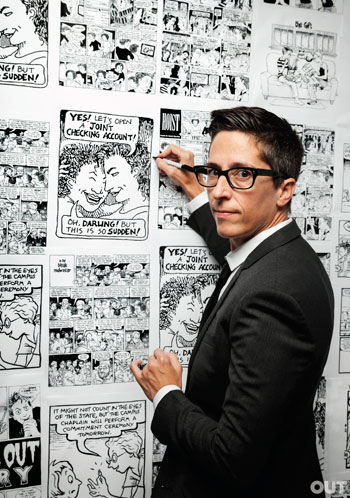I didn't give more than one response option :/ Sorry guys, I guess I'm like David Small's mom in that way.
 |
| I'd take Ms. Trenchbull over Mrs. Small any day. |
Anywho, we’ve read a lot of graphic
memoirs during the semester. Stitches
is also a memoir, and focuses on childhood. It's a really dark look back at childhood too. Not like Matilda or A Series of Unfortunate Events with sprinkles of humor but dark
like.. Well, I felt like I needed a hug after this one. I think there’s
something to be said about graphic memoirs and their ability to affect the
reader. Small, in Stitches, was able to visually convey a story of silence and internalized
emotions with few words. This memoir is characterized more by what was absent
than what was included. In a later interview Small talks about things he wishes
he would’ve included:
“One of them would have
been the fact that I actually did have friends when I was a teenager. And I
realized this was another instance where if I was going to talk about that the
book was going to grow to 500, 600 pages. I did feel that I had to say
something about it. And I felt I cleverly summed it up in that one page picture
of a party scene. But if I were a reader I guess that would certainly leave all
kinds of questions in my mind. Like, ‘What kind of friends did I have?’
What do you all think? Do
you feel satisfied with bits of David Small’s childhood that we’re getting? Why do you think he chose these vignettes
instead of others? Were there questions that you had about his experiences that
have yet to be answered (or what do you hope to see resolved)? Also, how do you think the absence of information adds, or takes away from the story?














 Now that we have read through the entire graphic novel, we can see how Yang has interwoven and tied all three story arcs together.
Now that we have read through the entire graphic novel, we can see how Yang has interwoven and tied all three story arcs together.
